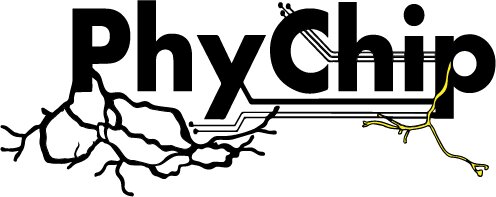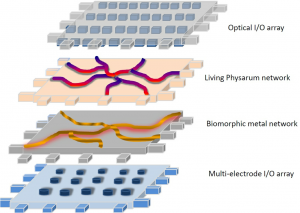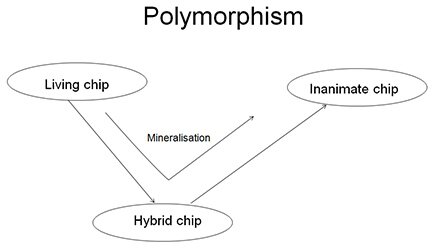Objective 1: Production and validation of Physarum processors. The Physarum will be controlled in building protoplasmic networks self-coated with conductors. The developed network of protoplasmic wires will be interfaced with living Physarum. The optimization of Physarum-built networks is supported by custom computer models. Interacting of Physarum micro-volume via conductor-coated network will be optimized. The stability and life-time of Physarum processor will be evaluated and if necessary optimized.
Objective 2: Demonstration of purposeful information processing in Physarum processors. Architectures of networks of interacting Physarum circuits will be designed and validated in simulation against benchmark tasks. Experimental prototypes support the simulation models with empirical data. Architectures suggested by the modelling effort will be implemented and characterised in the experimental laboratory. The fabrication of prototypes will serve as a reality-check on design decisions and choice of computing model. The operation speed and the stability of interconnections will be characterized and if necessary optimised.
Objective 3: Exploration and establishing the potential and the limitations of Physarum-built architectures. To achieve a realistic assessment of the potential of the hybrid processing technology the scalability of interconnections and network size will be evaluated with iterations of fabrication and characterisation of prototype devices. The robustness of architectures with regard to Physarum circuits failure and will be evaluated. We will establish a lower boundary to limits of feasibility with a series of proof-of-concept devices. Demonstrate and analyse its properties and computational potential (e.g., robustness, scalability, computational capabilities) using real physical implementations, theory studies, and simulations.
We have arrived at the this concept by deciding to maintain the historically successful features (which incidentally are also characteristics of biological information processing systems) and combine them with properties that are uniquely available from self-growing biological substrates and are ubiquitous in Nature’s IT. The project aimed to deliver proof-of-concept prototypes and models for highly innovative biomorphic information technology based on hybrid live and conductor-coated slime mould devices that are analogous to reaction-diffusion chemical systems encapsulated in a growing elastic membrane, combining dead (but coated with conductors) and living parts of slime mould in communication channels, powered directly and efficiently by bio-chemical power, fabricated using self-growth and self-organisation, controllably shaped into two- and three-dimensional structures, interfaced with conventional technology (optically or electronically) and via chemical means, responding to distinct activating and inhibiting stimuli, flexible with regards to the computing paradigm they implement; possessing a broad menu of options to side-step unforeseen difficulties or specialise for certain application domains, robust to physical damage and exhibit a degree of self-repair, the fabricated Physarum chip will perform computation by classical means of electrical charge propagation, by travelling waves of contraction, and by physical propagation of structures.


